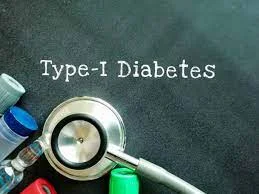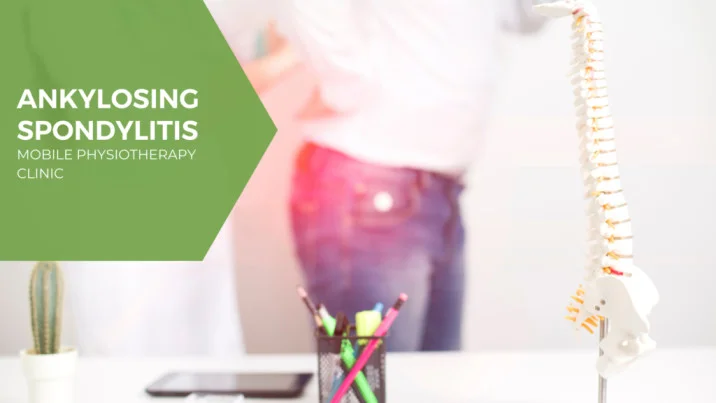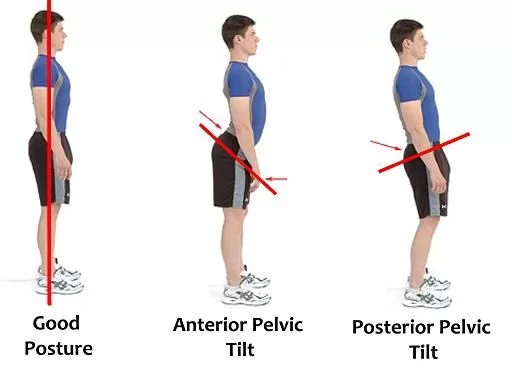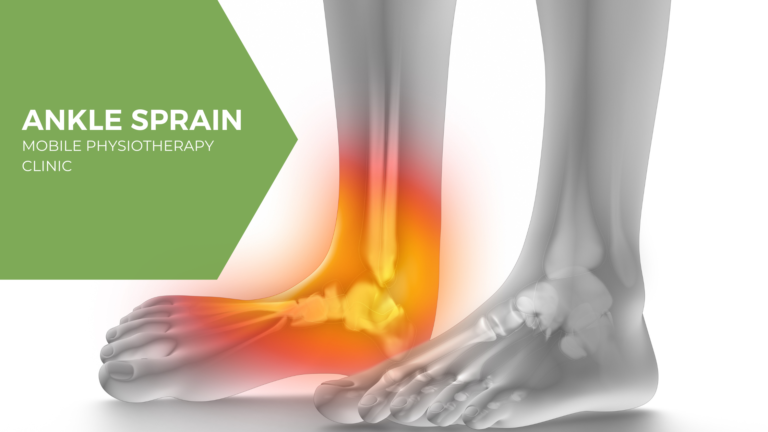Type 1 Diabetes
Table of Contents
What is a Type 1 Diabetes?
Diabetes type 1 is a chronic condition commonly known as insulin-dependent diabetes or juvenile diabetes. In this case, the pancreas either produces very little or none at all. The body employs the hormone insulin to let glucose, sometimes known as sugar, into cells so those cells can produce energy.
Type 1 diabetes can be caused by some variables, including some viruses and genetics. While it typically first manifests in childhood or adolescence, adults can also be affected by type 1 diabetes.
Following much study, there is still no treatment for type 1 diabetes. To avoid problems, treatment focuses on controlling blood sugar levels using insulin, food, and lifestyle changes.
Symptoms of Type 1 Diabetes
Symptoms of the type 1 diabetes may occur without indicating and include:
- Feeling extremely thirsty
- A lot of urination
- A child who have never slept through the night soaking their beds
- Feeling very hungry
- Losing weight without trying
- Feeling irritable or having other mood changes
- Feeling tired and weak
- Having blurry vision
Causes of Type 1 Diabetes
It is unreliable for sure what causes type 1 diabetes. The immune system of the body often eliminates the insulin-producing (islet) cells in the pancreas, fighting off dangerous bacteria and viruses. Additional potential reasons include of:
- Genetics
- Exposure to environmental variables and viruses
The role of insulin
The loss of a significant portion of islet cells results in minimal or no insulin production by the organism. The pancreas, a gland located below and behind the stomach, produces the hormone insulin.
- Through the pancreas, insulin is delivered into the bloodstream.
- Sugar can enter cells thanks to the movement of insulin throughout the body.
- A person’s blood sugar level is decreased by insulin.
- Less insulin is released into the bloodstream by the pancreas as blood sugar levels fall.
The role of glucose
The primary energy source for the cells that comprise muscles and other tissues is glucose, a type of sugar.
- There are two main sources of glucose: food and the liver.
- After being taken into the bloodstream, sugar uses insulin to enter cells.
- Glycogen is a type of glucose stored in the liver.
- The liver converts stored glycogen into glucose when blood glucose levels are low, such as after a period of fasting. As a consequence, glucose levels remain within a normal range.
Insulin, which allows glucose into cells, is absent in people with type 1 diabetes. Blood sugar rises as a result of treatment. Life-threatening consequences may result from this.
Risk factors
The following are a few things that can increase your risk of type 1 diabetes:
- Family history: The chance of having type 1 diabetes is somewhat increased in those who have a parent or sibling who has the disease.
- Genetics: The risk of type 1 diabetes is increased by specific genes.
- Geography: People with type 1 diabetes are more common the further they are from the equator.
- Age: There are two distinct peaks in the onset of type 1 diabetes, while it can occur at any age. In children between the ages of 4 and 7, the first peak happens. The second involves kids in the age range of 10 to 14.
Diagnosis
A fasting blood glucose level of more than or equal to 126 mg/dl is used to diagnose diabetes. Test for oral glucose tolerance (OGTT). This is a two-hour test that measures your blood sugar levels both before and after a sugary beverage. Your doctor will learn from this test how your body metabolizes glucose.
Complications
Complications from type 1 diabetes can eventually damage the body’s primary organs. The heart, blood vessels, nerves, eyes, and kidneys are among these organs. A regular blood sugar level can help reduce the chance of numerous issues.
Complications from diabetes may endanger your life or cause disabilities.
- Heart and blood vessel disease: Diabetes raises the possibility of several heart and blood vessel issues. These include hypertension, heart attacks, strokes, atherosclerosis (narrowing of the arteries), angina (chest discomfort linked to coronary artery disease), and heart attacks.
- Nerve damage (neuropathy): The capillaries, or tiny blood vessels, that supply the nerves, might sustain damage from an excess of sugar in the blood. This is particularly valid for the legs. Numbness, burning, tingling, or discomfort might come from this. Typically, this starts at the point of the tip of the toes or fingers and goes up. Over time, poorly managed blood sugar may result in complete loss of feeling in the affected limbs. Digestion-related nerve damage might result in issues with nausea, vomiting, diarrhea, or constipation. An issue with erectile dysfunction may arise in men.
- Kidney damage (nephropathy): Millions of microscopic blood capillaries in the kidneys prevent waste from getting into the blood. It is possible for diabetes to damage this mechanism. Kidney failure or irreversible end-stage renal illness can result from severe injury. Dialysis, or mechanical kidney filtering, is the treatment of choice for end-stage kidney disease. Kidney transplantation is also an option.
- Eye damage: Diabetes can cause diabetic retinopathy, or damage to the blood vessels in the retina, which is the portion of the eye that detects light. Blindness could result from this. Diabetes also raises the risk of developing glaucoma and cataracts, two more serious eye disorders.
- Foot damage: Certain foot issues are more likely to occur if there is nerve injury or inadequate blood supply to the feet. If wounds and blisters are not healed, they may become serious infections. Amputation of a toe, foot, or leg may be necessary to treat certain infections.
- Skin and mouth conditions: You may be more vulnerable to oral and skin infections if you have diabetes. Among them are infections caused by bacteria and fungi. Dry mouth and gum problems are also more common.
- Pregnancy complications: Both the mother and the child may be at risk from high blood sugar. Retardation, stillbirth, and deformities at birth are all associated with uncontrolled diabetes. Diabetes raises the risk of diabetic ketoacidosis, diabetic retinopathy, pregnancy-induced hypertension, and preeclampsia for the parent.
Treatment of Type 1 Diabetes
Type 1 diabetes is a serious illness that requires daily care and regular monitoring. Managing type 1 diabetes involves:
- Insulin replacement via insulin pump use or up to six daily insulin injections for the rest of one’s life
- Routine blood glucose monitoring (up to six times per day, or as instructed by a physician or Credentialed Diabetes Educator)
- Maintaining a nutritious diet and eating schedule
- Exercise regularly
- The goal of managing diabetes is to maintain blood glucose levels between 4 and 6 mmol/L (fasting), which is the target range.
- The ranges, however, will change based on the person and their unique situation.
- Maintaining optimal blood glucose levels requires a delicate balancing act between diet, exercise, and medication. Excessive blood glucose levels can cause ketoacidosis or hyperglycemia. Hypoglycemia may occur from very low blood glucose levels.
- It is important to monitor blood glucose levels all day, including at night. Maintaining appropriate blood glucose levels can help avoid issues in the short and long term.
- Physiotherapists should be involved in exercise education.
- Exercise regularly is crucial for managing diabetes. It aids in blood glucose regulation and makes insulin function more effectively. Exercise should be avoided until blood glucose levels have stabilized if the client has high or variable blood glucose (i.e., fasting blood glucose levels greater than 14 mmol/L and urine ketones). Under these conditions, exercise can raise blood sugar levels and promote the generation of ketones.
- If the patient has any diabetic problems (such as retinopathy or nephropathy), you should conduct a thorough assessment and recommend the necessary re-exercise. Examine for calluses, foot feeling, neuropathic symptoms, reflexes, and other issues.
Exercise-Specific Education
Exercise: You should be exercising for about 30 minutes a day to maintain optimum health. If this isn’t feasible, the allotted time can be split up into three separate 10-minute periods. You can work out in short bursts during the day. 45 to 60 minutes a day, if you need to reduce weight.
Exercise intensity: Try to keep your intensity modest. This implies that you shouldn’t run out of breath when exercising and still be able to speak.
Foot care: Individuals with diabetes run the risk of developing ulcers or other foot sores. Preventing foot damage is crucial, particularly for middle-aged and older individuals. Examine your feet both before and after working out. Steer clear of foot-stressing exercises like running. It is best to engage in low-impact exercise that doesn’t put too much strain on the feet, including brisk walking in supportive shoes or riding an exercise bike. Put on well-fitting, comfy shoes.
Workout advice:
- To prevent dehydration, increase your fluid intake before, during, and after physical activity (but only if it is prolonged). If more carbohydrates are needed, the liquid can be either water or a sweetened beverage. It is advised to consume 250 ml every 15 minutes or one liter per hour of fluid.
- To avoid hypoglycemia, consume more carbs before and during exercise. After exercise, extra carbohydrates are frequently required. Talk to your physician or nutritionist about modifying your intake of carbohydrates.
- To determine whether you need to eat more, check your blood sugar levels before, during, and after exercise, if at all possible.
- You might need to take less insulin before working out. Each person’s insulin adjustment is unique. Consult your physician or a Credentialed Diabetes Educator about any necessary modifications to your workout regimen.
- Use suncream when working out outside.
- If a diabetic feels ill or has ketones in their blood or urine, they should not engage in intense physical activity.
How to Prevent Type 1 Diabetes?
Prevention for the type 1 Diabetes:
- Type 1 diabetes is unknown to be preventable. Nonetheless, among those who have just received a diagnosis, experts are attempting to stop the illness or more harm to the islet cells.
- Find out from your healthcare physician if you could qualify for any of these clinical studies. It’s critical to carefully consider the advantages and disadvantages of every treatment offered in a study.
Prognosis
High morbidity and mortality are linked to type 1 diabetes. Throughout their lifetime, about 50% of patients will experience a major problem. Some will experience visual loss, while others will experience end-stage renal illness. The outlook is bright for those who survive the first 20 years. Nevertheless, there is no known treatment for the illness, and over time, the patient may experience vision loss, neuropathy, foot ulcers, and early coronary artery disease.
FAQs
Type 1 diabetes is thought to be the result of an autoimmune response, in which the body mistakenly attacks itself. This procedure destroys the pancreatic beta cells, which are responsible for producing insulin. It may take months or even years for any symptoms to show up throughout this process.
Type 1 diabetes does not yet have a treatment. Nonetheless, research is producing significant advances, new technology and medications are being created, and our understanding of the illness is continually changing. People with type 1 diabetes are currently living full, robust lives across all age groups.
The only therapies for Type 1 diabetes that are now available are pancreas transplants or transplants of the particular cells in the pancreas that produce insulin. Nevertheless, the disease affects 1.6 million Americans, and since there aren’t enough organs available right now, the bulk of them will never be cured.
People with type 1 diabetes may eventually acquire type 2 diabetes symptoms, even though they are not diagnosed with both types of diabetes at the same time. An autoimmune disease known as type 1 diabetes causes the body to stop producing insulin.
Pick more nutritious sources of carbohydrates, such as whole grains, starchy meals, fruits, vegetables, legumes, unsweetened milk, yogurt, nuts, and seeds.
Compared to type 1, type 2 diabetes is more closely associated with family history and ancestry, and research on twins has demonstrated the significant influence of genetics on the development of type 2 diabetes. Race may also be relevant. Nevertheless, environmental influences also play a role.
Indeed. Individuals diagnosed with type 1 diabetes have insufficient insulin production in their bodies. Most individuals administer insulin four times a day on average. Yet, numerous injections are gradually being replaced by the insulin pump, also known as continuous subcutaneous insulin infusions (CSII) as the preferred delivery method. With the pump, the body receives continuous insulin infusions by the insertion of a new catheter beneath the skin every few days. There are clinical trials investigating a patch and a nasal spray as potential insulin delivery methods, thus the pump is not the last word in insulin delivery systems.
Along with taking insulin and maintaining a balanced diet, exercise may generally help control type 1 diabetes. Always get advice from your doctor on exercise guidelines in order to minimize hazards and exercise safely.
Just because you feel well doesn’t mean your blood sugar is within the desired range. Recall that symptoms do not always show up immediately away. If you don’t regularly check your blood sugar, you might unknowingly do major harm to your feet, kidneys, eyes, or even your brain. See your doctor if you think your blood sugar levels are abnormal.
According to research, those who are at risk of developing type 2 diabetes can avoid or postpone the start of the disease by implementing the following lifestyle changes:
Consuming fewer items rich in calories and fat
Reducing body weight by at least 5%–7% (if overweight)
Participating in 150 minutes of physical activity each week
For type 1 diabetes, insulin is the primary therapy. Insulin pumps and injections are essential for survival. It’s critical to monitor and control your blood sugar levels if you want to lower your chance of developing major, either acute or chronic health issues. We refer to them as complications related to diabetes.








One Comment